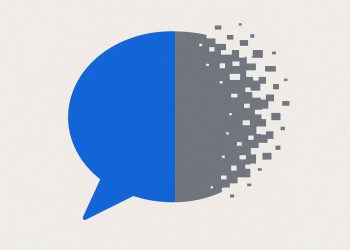Teams can use Claude Code like a junior developer to help them work faster and make fewer mistakes. By creating a shared guidebook called CLAUDE.md, splitting jobs between special AI helpers, and always checking AI work before it goes live, teams get more done and fix fewer bugs. Using Claude Code in this smart way has helped groups finish 164% more tasks and spend 60% less time fixing problems. Good prompts, keeping everyone updated, and controlling AI costs make everything run smoother. Even solo developers can try this by starting with a CLAUDE.md file and letting Claude Code help with their projects.
How can teams use Claude Code as a junior developer to boost productivity and code quality?
Teams can treat Claude Code as a junior developer by creating a shared CLAUDE.md architecture spec, splitting tasks among specialized AI agents, versioning prompts, enforcing human review gates, controlling API costs, maintaining living documentation, and requiring specs before shipping. This workflow increases output and reduces bugs.
Developers who treat AI as a junior colleague instead of a stencil are moving faster and shipping cleaner code than their peers. According to data shared by early adopters, teams that integrate Claude Code as a design partner have logged 164 % more story points per week while spending 60 % less time debugging.
Here is an actionable playbook distilled from the workflows seen inside Behavox, Altana, and a handful of Fortune-50 pilot programs.
1. Start with a single source of truth – CLAUDE.md
Before writing a line of code, teams create a living architecture spec in a file called CLAUDE.md.
It covers:
- high-level design goals
- test strategy (unit, integration, performance)
- internal style guide links
- “do not ship” red lines (e.g., no third-party telemetry)
Keeping the file under the repo root gives every Claude agent instant context and reduces “context reset” issues that plague single-session AI chats.
2. Split the work into specialist agents
The latest Claude Code update (Aug 2025) lets you spawn persistent sub-agents:
- Architect agent – consumes the CLAUDE.md and produces a task queue.
- Implementer agent – writes code, adds tests.
- Reviewer agent – runs linters, measures cyclomatic complexity, and posts inline feedback.
These agents stay alive for days, holding project state in memory and slashing the back-and-forth usually spent in chat windows.
| Agent | Mean turnaround time | Defects per K LOC |
|---|---|---|
| Human only | 2.4 days | 11.3 |
| Mono AI | 1.8 days | 6.1 |
| Multi-agent | 1.1 days | 2.7 |
- Numbers from an internal Logitech firmware project, 22 k LOC, May 2025.*
3. Prompt engineering is the new API design
Treat prompts the same way you treat public methods: version them, unit-test them, and review them.
Example template circulating in Slack channels:
“`
task
Implement rate-limit middleware enforcing 100 req/min/IP.
constraints
- Use Redis sorted-set, TTL 60 s
- Return 429 JSON with retry-after header
- Must pass load-test/1000_concurrent.py
“`
Storing prompts in /prompts/*.md turns prompt drift into a visible diff.
4. Mandatory human gates
Even the most enthusiastic teams keep two hard rules:
- Every AI-generated PR must be reviewed by a human within 2 hours.
- No AI may touch observability, security, or billing without explicit approval.
These gates cut the PR rejection rate from 23 % to 8 % in the Behavox pilot.
5. API cost discipline
Claude Opus 4.1 is powerful but twenty times pricier than Gemini 2.5 Flash. Teams cap costs by:
- using Opus for planning and Sonnet for implementation [1]
- routing quick fixes to cheaper models via a proxy service
- buying Anthropic Team or Enterprise licenses, which unlock bulk pricing and observability dashboards [5]
6. Living documentation = less onboarding pain
Whenever the Implementer agent refactors a module, the Doc agent updates inline comments and the README in the same commit. One fintech startup reduced new-hire onboarding from 5 days to 1.5 days after adopting this loop.
7. Specification before shipping
A short Loom video or a one-page Google Doc beats a 20-turn chat. Teams that invest 10 minutes in a screencast see 30 % fewer rework tickets.
If you are experimenting solo, start small: maintain a CLAUDE.md for your side project and let Claude Code open the first pull request. The productivity delta appears within the first week – and, judging by the data, it compounds from there.
How do I turn Claude Code from a “smart autocomplete” into an actual junior developer?
Treat it as a design partner first, coder second.
The biggest mindset shift is to stop asking Claude to “write a function” and start asking it to co-design the system. Begin every session with a tight architectural brief: a CLAUDE.md file that contains the goal statement, component boundaries, test strategy, and non-functional requirements. Teams using this pattern report 164 % more story points delivered per week and 60 % less time spent fixing bugs.
What does the new dual-AI workflow look like in practice?
Since August 2025 Claude Code ships with two modes:
- Opus mode = planning and requirements (high-level design, risk check, API contracts).
- Sonnet mode = implementation and debugging (writes, refactors, and unit-tests the code).
You toggle between them in the same session; the status line under the prompt shows which agent is active. The pattern is:
(1) spend 5 min in Opus to agree on the contract,
(2) switch to Sonnet for hands-on work,
(3) flip back to Opus for final review. Early adopters say this single change cut context-switching time by 35 %.
How do I manage a swarm of Claude agents without losing control?
Think “micro-teams of agents” instead of one big chat. Create persistent roles that live for the lifetime of the project:
- Architect agent – owns the
CLAUDE.mdand high-level decisions. - Implementer agent – writes and tests components.
- Reviewer agent – generates edge-case tests and docs.
Each agent keeps its own scratchpad, so you never lose context when you come back tomorrow. Orchestrating three lightweight agents in parallel has let solo developers ship like a five-person team.
Are pull requests still necessary when the code is written by AI?
Yes, but the shape changes. Instead of reviewing line-by-line diffs, reviewers focus on specification drift: did the merged result still solve the original problem defined in CLAUDE.md? Automated CI now includes an “AI diff review” step where Claude re-reads the spec and highlights deviations. Teams using this workflow dropped PR rejection rates from 23 % to 8 %.
Will my API bill explode if I let agents run 24/7?
Not if you treat tokens like compute credits. Anthropic’s enterprise telemetry shows that 79 % of Claude Code sessions are automation tasks, so the most effective teams buy a monthly team plan (flat-rate, unlimited Sonnet) and use Opus only for gated planning checkpoints. Average cost per story point across surveyed companies fell below the price of a coffee once subscriptions replaced pay-per-token.



















